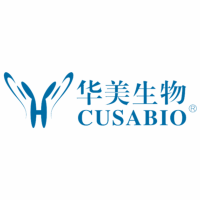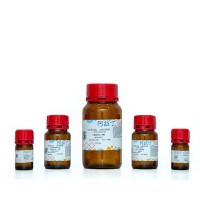磷酸化蛋白鉴定
丁香园
4363
1. 前言
鉴定植物磷酸化蛋白质的实验方法主要有以下 5 种 :① 放射性同位素 32P 或 33P 标记 [1];② 不同蛋白质电泳迁移率的检测 [ 2,3] ;③ 磷酰氨基酸特异性抗体的免疫分析[ 3,4];④ 磷酸化诱导增加的完整蛋白质质量的质谱分析[5,6] ;⑤ 蛋白质水解后得到的磷酸肽的鉴定及序列分析 [ 7~9] 。最近已经报道了以上所列的此种技术用于检测植物类囊体膜上磷酸化蛋白的实验方法[ 10] 。因此,本章将不再进一步讨论以上 ①~④ 的实验方法,重点讨论最有效率和最有用的第 ⑤ 种实验方法。
这一技术基于蛋白质组分的胰蛋白酶消化以及肽段(不是蛋白质)的进一步分离,蛋白质的水解消化应该在不同的膜分离制备物或植物细胞可溶性组分中进行。通过固相金属螯合亲和层析(IMAC) 富集得到的肽混合物中的磷酸肽,用串联质谱对分离到的磷酸肽进行序列分析。这种方法能识别体内磷酸化蛋白质及其蛋白质序列磷酸化的准确位点。该方法对最近完成的植物以及其他物种中蛋白质磷酸化位点定位图作出了主要的贡献 [11] 。 这种方法关键部分就是磷酸化肽段的质谱序列分析。一旦蛋白质磷酸化位点被定位,接下来的蛋白质磷酸化程度的相对定量分析可通过以下介绍的实验方法中的两个不同的实 验步骤来完成,在此需要提醒大家的是,这里所介绍的成功应用以质谱为基础的磷酸肽鉴定的方法,仅限于已经完成基因组测序的植物物种的蛋白质磷酸化鉴定和分析。
2. 材料
( 1 ) 分别配制新鲜的 25 mmol/L NH4HCO3 和 10 mmol/L NaF 溶液。
( 2 ) 二硫苏糖醇(DTT ) 。
( 3 ) 碘代乙酰胺,它在溶液中不稳定,因此要用前现配。
( 4 ) Sequencing-grade modified trypsin ( 测序级膜蛋白酶) (Promega 公司, Madison , WI)。
( 5 ) GELoader 枪头(Eppendorf 公司,Hamburg, Germany)。
( 6 ) Chelating Sepharose Fast Flow ( 螯合琼脂糖凝胶层析介质) ( Amersham Biosciences公司, Uppsala, Sweden)。
( 7 ) 配制新鲜的 0.1 mol/L FeCl3 溶液。
( 8 ) 分别配制新鲜的 20 mmol/L Na2HPO4 和 20% ( V/V)乙腈水溶液。
( 9 ) 配制新鲜的 0.1% ( V/V) 乙酸溶液。
( 10 ) 液相色谱级等梯度乙腈。
( 11 ) ZipTipC18 层析柱(Millipore 公司、Bedford、MA、USA ) 。
( 12 ) 光谱用三氟乙酸(TFA) 。
( 13 ) 甲酸。
( 14 ) 乙酰氯。
( 15 ) 髙效液相色谱用无水甲醇梯度。
( 16 ) 无水甲醇-d3。
4. 注释
( 1 ) 胰蛋白酶消化酶解的肽经 25 mmol/L 碳铵(NH4HCO3) 处理后,上清液可直接用于质谱分析。为了去除膜样品制备过程中所使用的缓冲液中多余的盐,用 25 mmol/L NH4HCO3 对膜样品进行两次以上的洗涤。
( 2 ) 为了避免由蛋白磷酸酶引起的蛋白质去磷酸化,在 25 mmol/L 碳酸氢铵洗脱液中添加 10 mmol/L 氟化钠。同时,膜样品的清洗过程的悬浮和离心操作也应在 4°C 下进行。
( 3 ) 甲酰甲基化可防止初级氧化造成的半胱氨酸残基的非正常修饰。
( 4 ) 提供含有高浓度的蛋白质(叶绿素)(10~15 mg 蛋白质/ml,或 3 mg 叶绿素/ml) 膜悬浮物进行胰蛋白酶消化酶解并得到可直接用于质谱分析的一个高浓度的肽样品是非常重要的。
( 5 ) 要在 22~25°C,而不是在 37°C 下进行光合膜蛋白酶解处理,因为许多光系统 II 磷酸化蛋白可在 37°C 下被热休克蛋白激活的膜蛋白磷酸酶迅速去磷酸化。
( 6 ) 使用前新鲜配制三氯化铁溶液。
( 7 ) 不要在洗脱液中添加 TFA,因为 TFA 会在 ESI-MS 过程中抑制肽的电离。
( 8 ) 肽应被电离为带正电荷的质子离子。为增加阳性电离,可在分析之前加入最终浓度为 1% 的甲酸对肽样品进行酸化处理。
( 9 ) 单电荷和多电荷离子峰都能够指示肽,ESI 中的化学噪声主要由单电荷离子峰组成。高信噪比的肽离子使它们在质谱谱图上易于识别。由于多电荷离子的同位素形式比单电荷离子同位素形式具有更高的密度,所以在该噪音水平上也能看到多电荷的钛离子。
( 10 ) 肽的性质及其电离特性决定用质谱检测的肽离子强度。因此,定量比较不同的肽一般来说是不允许的。但是,由于肽的磷酸化仅增加了 80 m/z ( HPO3) ,不改变酸性条件下肽的电离状态,因此,可以通过 LC-MS,在正电离模式条件下,定量分析一个磷酸肽和与其相对应的非磷酸化肽的比例。
( 11 ) 两个平行的质谱实验按照以下设置进行:在 320~1800 m/z 范围内,以阳性离子扫描模式扫描 5.2s,暂停 0.7s 进行极性转换;然后在阴离子模式下,单离子检测 79 m/z 1.5s,接着再暂停 0.7s 返回到阳离子模式。在整个的 LC-MS 运行过程中不断重复这样的正/负离子扫描循环的。
参考文献
1. Michel, H. P. and Bennett, J. (1987) Identification of the phosphorylation site of an 8.3 k D a protein from photosystem II of spinach. FEBS Lett.212, 103-108.
2. Elich, T. D., Edelman, M., and Mattoo, A. K. (1992) Identification, characterization, and resolution of the in vivo phosphorylated form of the D 1 photosystem II reaction center protein. J. Biol. Chem.267, 3523-3529.
3. Rintamaki, E., Salonen, M., Suoranta, U. M., Carlberg, I., Andersson, B., and Aro, E.-M. (1997) Phosphorylation of light-harvesting complex II and photosystem II core proteins shows different irradiance-dependent regulation in vivo. Application of phosphothreonine antibodies to analysis of thylakoid phosphopro- teins. J. Biol. Chem.272, 30476— 30482.
4. Rintamaki, E. and Aro, E.-M. (2001) Phosphorylation of photosystem II proteins, in Regulation o f Photosynthesis(Aro, E.-M. and Andersson, B., eds.), Kluwer Academic Publishers, Dordrecht, Nederlands, pp. 395-418.
5. G o m e z , S. M., Nishio, J. N., Faull, K. F., and Whitelegge, J. P. (2002) The chlo- roplast grana proteome defined by intact mass measurements from liquid chromatography mass spectrometry. Mol. Cell. Proteomics1, 46-59.
6. Carlberg, I., Hansson, M., Kieselbach, T., Schroder, W . P., Andersson, B., and Vener, A. V. (2003) A novel plant protein undergoing light-induced phosphoryla- tion and release from the photosynthetic thylakoid m e m b r a n e s .尸 iVfl/7. Acc/d Sci. USA100, 757-762.
7. Vener, A. V., Harms, A., Sussman, M . R., and Vierstra, R. D. (2001) Mas s spec- trometric resolution of reversible protein phosphorylation in photosynthetic membranes of Arabidopsis thaliana. J . Biol. Chem.276, 6959-6966.
8. Hansson, M . and Vener, A. V. (2003) Identification of three previously u n k n o w n in vivo protein phosphorylation sites in thylakoid m e m b r a n e s of Arabidopsisthaliana. Mol. Cell. Proteomics2, 550-559.
9. Nuhse, T. S., Stensballe, A., Jensen, 0. N., and Peck, S. C. (2003) Large-scale analysis of in vivo phosphorylated m e m b r a n e proteins by immobilized metal ion affinity chromatography and mass spectrometry. Mol. Cell. Proteomics2,1234-1243.
10. Aro, E.-M., Rokka, A., and Vener, A. V. (2004) Determination of phosphopro- teins in higher plant thylakoids. Methods Mol. Biol.274, 271-285.
11. Loyet, K. M., Stults, J. T., and Arnott, D. (2005) M a s s spectrometric contributions to the practice of phosphorylation site mapping through 2003: a literature review. Mol. Cell. Proteomics4, 235-245.
12. Ficarro, S. B., McCleland, M . L., Stukenberg, P. T., et al. (2002) Phospho- proteome analysis by mass spectrometry and its application to Saccharomyc.escerevisiae. Nat. Biotechnol.20, 301-305.
13. Shou, W., Verma, R., Annan, R. S., et al. (2002) M a p p i n g phosphorylation sites in proteins by mass spectrometry. Methods Enzymol.351, 279-296.
14. He, T., Alving, K., Field, B., et al. (2004) Quantitation of phosphopeptides using affinity chromatography and stable isotope labeling. / ? A m . Soc. M a w15, 363-373.
15. Ficarro, S., Chertihin, 0., Westbrook, V. A., et al. (2003) Phosphoproteome analysis of capacitated h u m a n sperm. Evidence of tyrosine phosphorylation of a kinase-anchoring protein 3 and valosin-containing protein/p97 during capacita- tion./. Biol. Chem.278, 11,579-11,589.
16. Rokka, A., Aro, E.-M., Herrmann, R. G., Andersson, B., and Vener, A. V. (2000) Dephosphorylation of photosystem II reaction center proteins in plant photosynthetic m e m b r a n e s as an immediate response to abrupt elevation of temperature. Plant Physiol.123, 1525-1536.
鉴定植物磷酸化蛋白质的实验方法主要有以下 5 种 :① 放射性同位素 32P 或 33P 标记 [1];② 不同蛋白质电泳迁移率的检测 [ 2,3] ;③ 磷酰氨基酸特异性抗体的免疫分析[ 3,4];④ 磷酸化诱导增加的完整蛋白质质量的质谱分析[5,6] ;⑤ 蛋白质水解后得到的磷酸肽的鉴定及序列分析 [ 7~9] 。最近已经报道了以上所列的此种技术用于检测植物类囊体膜上磷酸化蛋白的实验方法[ 10] 。因此,本章将不再进一步讨论以上 ①~④ 的实验方法,重点讨论最有效率和最有用的第 ⑤ 种实验方法。
这一技术基于蛋白质组分的胰蛋白酶消化以及肽段(不是蛋白质)的进一步分离,蛋白质的水解消化应该在不同的膜分离制备物或植物细胞可溶性组分中进行。通过固相金属螯合亲和层析(IMAC) 富集得到的肽混合物中的磷酸肽,用串联质谱对分离到的磷酸肽进行序列分析。这种方法能识别体内磷酸化蛋白质及其蛋白质序列磷酸化的准确位点。该方法对最近完成的植物以及其他物种中蛋白质磷酸化位点定位图作出了主要的贡献 [11] 。 这种方法关键部分就是磷酸化肽段的质谱序列分析。一旦蛋白质磷酸化位点被定位,接下来的蛋白质磷酸化程度的相对定量分析可通过以下介绍的实验方法中的两个不同的实 验步骤来完成,在此需要提醒大家的是,这里所介绍的成功应用以质谱为基础的磷酸肽鉴定的方法,仅限于已经完成基因组测序的植物物种的蛋白质磷酸化鉴定和分析。
2. 材料
( 1 ) 分别配制新鲜的 25 mmol/L NH4HCO3 和 10 mmol/L NaF 溶液。
( 2 ) 二硫苏糖醇(DTT ) 。
( 3 ) 碘代乙酰胺,它在溶液中不稳定,因此要用前现配。
( 4 ) Sequencing-grade modified trypsin ( 测序级膜蛋白酶) (Promega 公司, Madison , WI)。
( 5 ) GELoader 枪头(Eppendorf 公司,Hamburg, Germany)。
( 6 ) Chelating Sepharose Fast Flow ( 螯合琼脂糖凝胶层析介质) ( Amersham Biosciences公司, Uppsala, Sweden)。
( 7 ) 配制新鲜的 0.1 mol/L FeCl3 溶液。
( 8 ) 分别配制新鲜的 20 mmol/L Na2HPO4 和 20% ( V/V)乙腈水溶液。
( 9 ) 配制新鲜的 0.1% ( V/V) 乙酸溶液。
( 10 ) 液相色谱级等梯度乙腈。
( 11 ) ZipTipC18 层析柱(Millipore 公司、Bedford、MA、USA ) 。
( 12 ) 光谱用三氟乙酸(TFA) 。
( 13 ) 甲酸。
( 14 ) 乙酰氯。
( 15 ) 髙效液相色谱用无水甲醇梯度。
( 16 ) 无水甲醇-d3。
4. 注释
( 1 ) 胰蛋白酶消化酶解的肽经 25 mmol/L 碳铵(NH4HCO3) 处理后,上清液可直接用于质谱分析。为了去除膜样品制备过程中所使用的缓冲液中多余的盐,用 25 mmol/L NH4HCO3 对膜样品进行两次以上的洗涤。
( 2 ) 为了避免由蛋白磷酸酶引起的蛋白质去磷酸化,在 25 mmol/L 碳酸氢铵洗脱液中添加 10 mmol/L 氟化钠。同时,膜样品的清洗过程的悬浮和离心操作也应在 4°C 下进行。
( 3 ) 甲酰甲基化可防止初级氧化造成的半胱氨酸残基的非正常修饰。
( 4 ) 提供含有高浓度的蛋白质(叶绿素)(10~15 mg 蛋白质/ml,或 3 mg 叶绿素/ml) 膜悬浮物进行胰蛋白酶消化酶解并得到可直接用于质谱分析的一个高浓度的肽样品是非常重要的。
( 5 ) 要在 22~25°C,而不是在 37°C 下进行光合膜蛋白酶解处理,因为许多光系统 II 磷酸化蛋白可在 37°C 下被热休克蛋白激活的膜蛋白磷酸酶迅速去磷酸化。
( 6 ) 使用前新鲜配制三氯化铁溶液。
( 7 ) 不要在洗脱液中添加 TFA,因为 TFA 会在 ESI-MS 过程中抑制肽的电离。
( 8 ) 肽应被电离为带正电荷的质子离子。为增加阳性电离,可在分析之前加入最终浓度为 1% 的甲酸对肽样品进行酸化处理。
( 9 ) 单电荷和多电荷离子峰都能够指示肽,ESI 中的化学噪声主要由单电荷离子峰组成。高信噪比的肽离子使它们在质谱谱图上易于识别。由于多电荷离子的同位素形式比单电荷离子同位素形式具有更高的密度,所以在该噪音水平上也能看到多电荷的钛离子。
( 10 ) 肽的性质及其电离特性决定用质谱检测的肽离子强度。因此,定量比较不同的肽一般来说是不允许的。但是,由于肽的磷酸化仅增加了 80 m/z ( HPO3) ,不改变酸性条件下肽的电离状态,因此,可以通过 LC-MS,在正电离模式条件下,定量分析一个磷酸肽和与其相对应的非磷酸化肽的比例。
( 11 ) 两个平行的质谱实验按照以下设置进行:在 320~1800 m/z 范围内,以阳性离子扫描模式扫描 5.2s,暂停 0.7s 进行极性转换;然后在阴离子模式下,单离子检测 79 m/z 1.5s,接着再暂停 0.7s 返回到阳离子模式。在整个的 LC-MS 运行过程中不断重复这样的正/负离子扫描循环的。
参考文献
1. Michel, H. P. and Bennett, J. (1987) Identification of the phosphorylation site of an 8.3 k D a protein from photosystem II of spinach. FEBS Lett.212, 103-108.
2. Elich, T. D., Edelman, M., and Mattoo, A. K. (1992) Identification, characterization, and resolution of the in vivo phosphorylated form of the D 1 photosystem II reaction center protein. J. Biol. Chem.267, 3523-3529.
3. Rintamaki, E., Salonen, M., Suoranta, U. M., Carlberg, I., Andersson, B., and Aro, E.-M. (1997) Phosphorylation of light-harvesting complex II and photosystem II core proteins shows different irradiance-dependent regulation in vivo. Application of phosphothreonine antibodies to analysis of thylakoid phosphopro- teins. J. Biol. Chem.272, 30476— 30482.
4. Rintamaki, E. and Aro, E.-M. (2001) Phosphorylation of photosystem II proteins, in Regulation o f Photosynthesis(Aro, E.-M. and Andersson, B., eds.), Kluwer Academic Publishers, Dordrecht, Nederlands, pp. 395-418.
5. G o m e z , S. M., Nishio, J. N., Faull, K. F., and Whitelegge, J. P. (2002) The chlo- roplast grana proteome defined by intact mass measurements from liquid chromatography mass spectrometry. Mol. Cell. Proteomics1, 46-59.
6. Carlberg, I., Hansson, M., Kieselbach, T., Schroder, W . P., Andersson, B., and Vener, A. V. (2003) A novel plant protein undergoing light-induced phosphoryla- tion and release from the photosynthetic thylakoid m e m b r a n e s .尸 iVfl/7. Acc/d Sci. USA100, 757-762.
7. Vener, A. V., Harms, A., Sussman, M . R., and Vierstra, R. D. (2001) Mas s spec- trometric resolution of reversible protein phosphorylation in photosynthetic membranes of Arabidopsis thaliana. J . Biol. Chem.276, 6959-6966.
8. Hansson, M . and Vener, A. V. (2003) Identification of three previously u n k n o w n in vivo protein phosphorylation sites in thylakoid m e m b r a n e s of Arabidopsisthaliana. Mol. Cell. Proteomics2, 550-559.
9. Nuhse, T. S., Stensballe, A., Jensen, 0. N., and Peck, S. C. (2003) Large-scale analysis of in vivo phosphorylated m e m b r a n e proteins by immobilized metal ion affinity chromatography and mass spectrometry. Mol. Cell. Proteomics2,1234-1243.
10. Aro, E.-M., Rokka, A., and Vener, A. V. (2004) Determination of phosphopro- teins in higher plant thylakoids. Methods Mol. Biol.274, 271-285.
11. Loyet, K. M., Stults, J. T., and Arnott, D. (2005) M a s s spectrometric contributions to the practice of phosphorylation site mapping through 2003: a literature review. Mol. Cell. Proteomics4, 235-245.
12. Ficarro, S. B., McCleland, M . L., Stukenberg, P. T., et al. (2002) Phospho- proteome analysis by mass spectrometry and its application to Saccharomyc.escerevisiae. Nat. Biotechnol.20, 301-305.
13. Shou, W., Verma, R., Annan, R. S., et al. (2002) M a p p i n g phosphorylation sites in proteins by mass spectrometry. Methods Enzymol.351, 279-296.
14. He, T., Alving, K., Field, B., et al. (2004) Quantitation of phosphopeptides using affinity chromatography and stable isotope labeling. / ? A m . Soc. M a w15, 363-373.
15. Ficarro, S., Chertihin, 0., Westbrook, V. A., et al. (2003) Phosphoproteome analysis of capacitated h u m a n sperm. Evidence of tyrosine phosphorylation of a kinase-anchoring protein 3 and valosin-containing protein/p97 during capacita- tion./. Biol. Chem.278, 11,579-11,589.
16. Rokka, A., Aro, E.-M., Herrmann, R. G., Andersson, B., and Vener, A. V. (2000) Dephosphorylation of photosystem II reaction center proteins in plant photosynthetic m e m b r a n e s as an immediate response to abrupt elevation of temperature. Plant Physiol.123, 1525-1536.







